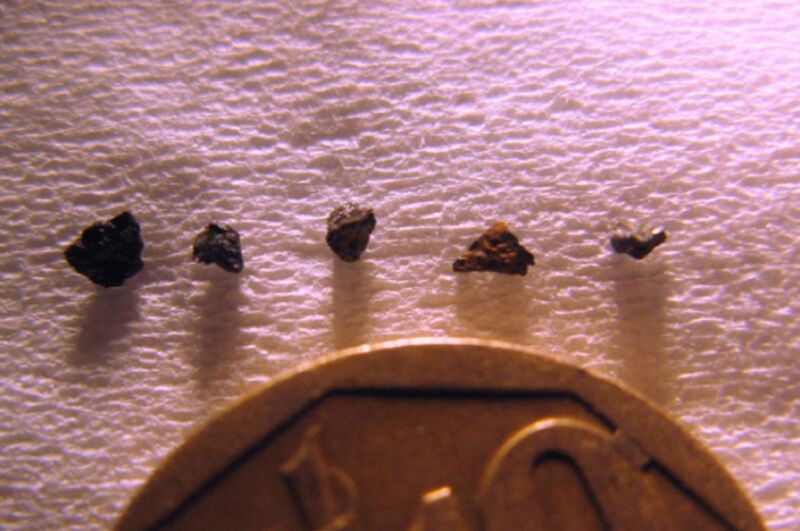Mysterious Hypatia stone might hold earliest evidence of Type Ia supernova

Enlarge / Tiny samples of the Hypatia stone next to a small coin. Rare type Ia supernovas are some of the most energetic events in the universe. Researchers found a consistent pattern of 15 elements in the Hypatia stone, unlike anything in our solar system or in the Milky Way. (credit: Jan Kramers)
In 1996, an archaeologist named Aly A. Barakat was doing fieldwork in an Egyptian desert and stumbled across an unusual shiny black pebble now known as the Hypatia stone (after Hypatia of Alexandria). Studies conducted over the last several years indicate that the stone is of extraterrestrial origin. And according to a recent paper published in the journal Icarus, the stone's parent body was likely born in the aftermath of a rare type Ia supernova explosion.
The Hypatia stone was found in an area of southwest Egypt known for its Libyan Desert glass, produced by an extreme surface heating event, quite possibly a meteorite. The Hypatia stone may have also come from that impact, although more recent evidence suggests a comet would be a more likely parent body.
The University of Johannesburg's Jan Kramers and several colleagues have investigated the Hypatia stone for many years. Kramers compared the Hypatia stone's internal structure to a fruitcake: a poorly mixed dough forming the bulk of the pebble (mixed matrices), with the mineral grains lurking in the stone's inclusions representing the cherries and nuts. He likened the secondary substances in the stone's cracks to the flour dusting the gaps in a fruitcake.
Read 11 remaining paragraphs | Comments